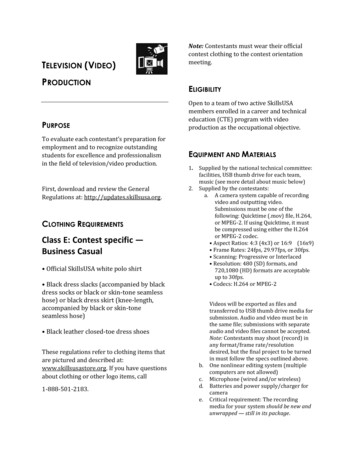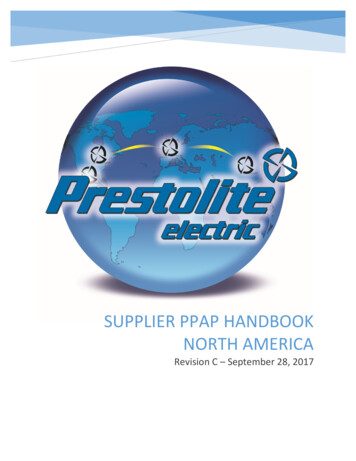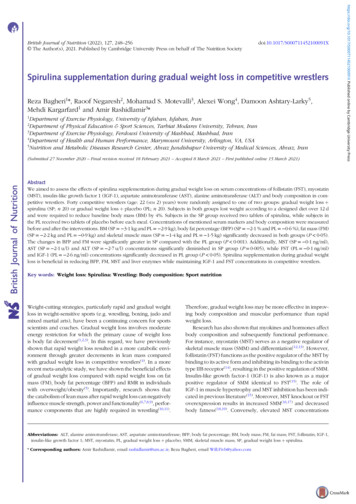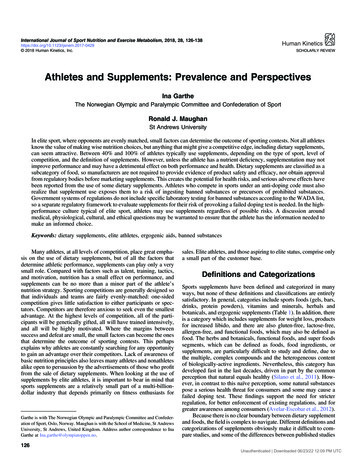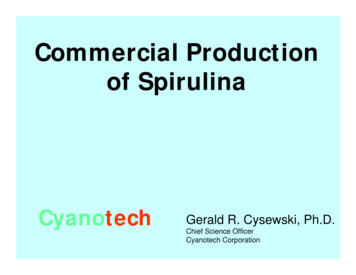
Transcription
Commercial Productionof SpirulinaCyanotechGerald R. Cysewski, Ph.D.Chief Science OfficerCyanotech Corporation
Cyanotech Specializing in MicroalgaeTechnology Operating since 1984 100 Employees GMP Certified by NPA Non-GMO, environmentallyfriendly products Public Company:NASDAQ:CYANKeahole Point, Hawaii
Cyanotech’s Production Facility 90 acre facility in Kona, Hawaii. Consistent sun and temperature yearround Separate production facilities forSpirulina and Haematococcus Major Spirulina production capacity Astaxanthin production is consistentand growing to meet market demand
Spirulina-High Nutritional Value 60% Protein Rich in carotenoids Beta Carotene Zeaxanthin Phycocyanin Liver and Kidney protection Immune stimulating compounds Antiviral compoundsCyanotech
Microalgae Production InKona, Hawaii Ideal Climate Warm year round High solar insolation Low rain fall Unique resource Cold deep seawater High Costs Land Clearing (hard lava) 85,000/Acre CO2 440/ton Power 0.37/KwhCyanotech
Spirulina Production 40 Culture ponds Average size30,000 sq. ft. Culture media150,000 gal Total area29 acresCyanotech
Cyanotech
Spirulina Culture Ponds Lined with Reinforced Plastic Paddle Wheel Agitation Cost per 30,000 ft2 Pond Land Leveling 56,800 Lining 22,000 Agitation 24,900 Piping 15,100Total 118,800Cyanotech
Spirulina Typical Growth 4·7H2ONa-EDTATrace mineralsGrams/Liter .16.02.51.01.00.50.20.012.5Cyanotech
Highly Alkaline Growth Media Operation Necessities Recycle growth media Each 30,000 ft2 ponds contains 7,500sodium bicarbonate ( 330,000 on farm) Operation Opportunities Reduced or no culture contamination Carbon dioxide recoveryCyanotech
Spirulina Production Flow ChartCyanotech
Cyanotech
CO2 / HCO3- / CO3 EquilibriumOH- CO2HCO3 OH-CO3 H2OCyanotech
M o l e F r a c ti o n o f S p e c i e sCO2/Bicarb/Carbonate .400.200.005.06.07.08.09.0Solution pH10.011.012.0Cyanotech
Highly Alkaline Growth Media At pH 10.5 40% of C is HCO3 At pH 10.0 68% of C is HCO3 At 16 g/l of NaHCO3: A pH decrease from 10.5 to 10absorbs sufficient CO2 (carbon)to produce 1.3 g dry wt/l cells(CO2 OH- HCO3- ) All carbon can be absorbed in mediafor a complete growth cycle. (at pondinjection is not required)Cyanotech
Ocean-Chill Spray DryingLow Oxygen with CO2 RecoveryCyanotech
Ocean-Chill Spray Drying Low Oxygen environment– protects sensitive nutrients Beta carotene, Zeaxanthin, Phycocyanin Cold Deep Seawater Cost Effective– 4.5 ºC seawater--US 0.21 per 1000 gallons– Electric power for identical cooling—US 5.60 Carbon dioxide recovery reduces costsCyanotech
Haematococcus (Astaxanthin) Production 28 Culture ponds Average size28,000 sq ft Total area18 acresCyanotech
Haematococcus CellsMotile, greenHaematococcuscellsEncysted cells produce massiveamounts of astaxanthin (400xmagnification)
Productions of Haematococcus Two Stage System Closed Culture Outdoor Open CultureAll cultures scaled up from 200 ml lab shake flasks 20 liter 400 liter 30,000 liter 500,000 liter reddening pondsHaematococcus spores cracked and driedProduction 10 times more difficult thanSpirulina!
Productions of Haematococcus Dried, cracked biomass currently sent offsite forextraction Supercritical CO2 extraction New Jersey New Zealand Bringing Supercritical CO2 extraction on site 1,000 bar (15,000 psi) system Operational April 2016 Will generate 60,000 kg/yr of extracted biomass
Productions of Haematococcus Extracted Haematococcus Biomass (60,000 kg/yr) 35 % Protein 52 % Carbohydrates 2.6 % Fat 7% Ash 370 calories/100 grams Successfully tested in shrimp and fish feeds Detailed analysis available Samples available Biomass available April 2015
Extracted Haematococcus Biomass
CyanotechCorporation
Keahole Point, Hawaii Cyanotech. Cyanotech's Production Facility 90 acre facility in Kona, Hawaii. Consistent sun and temperature year-round Separate production facilities for Spirulina and Haematococcus Major Spirulina production capacity Astaxanthin production is consistent and growing to meet market demand.




